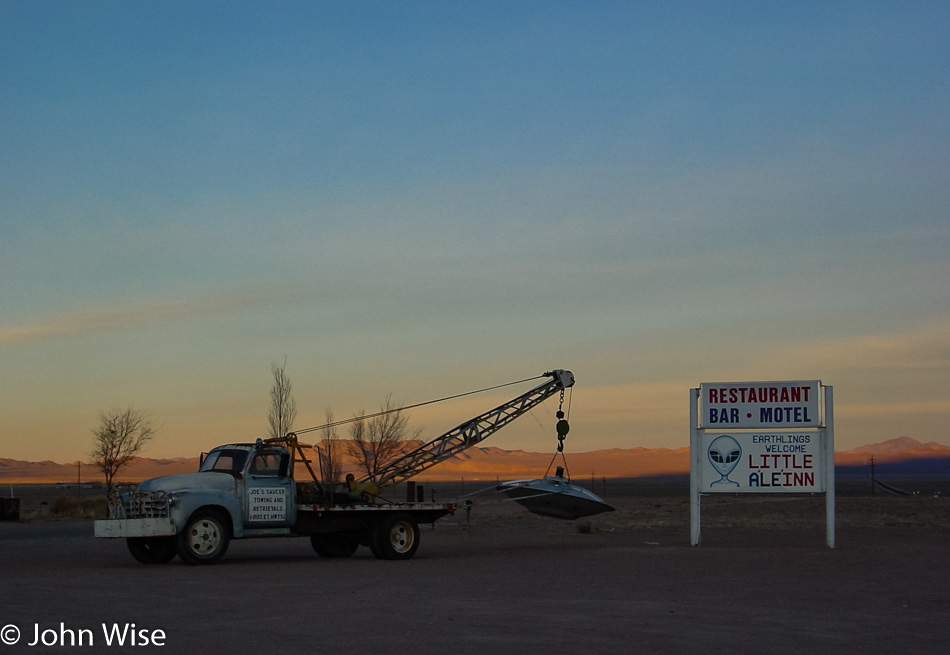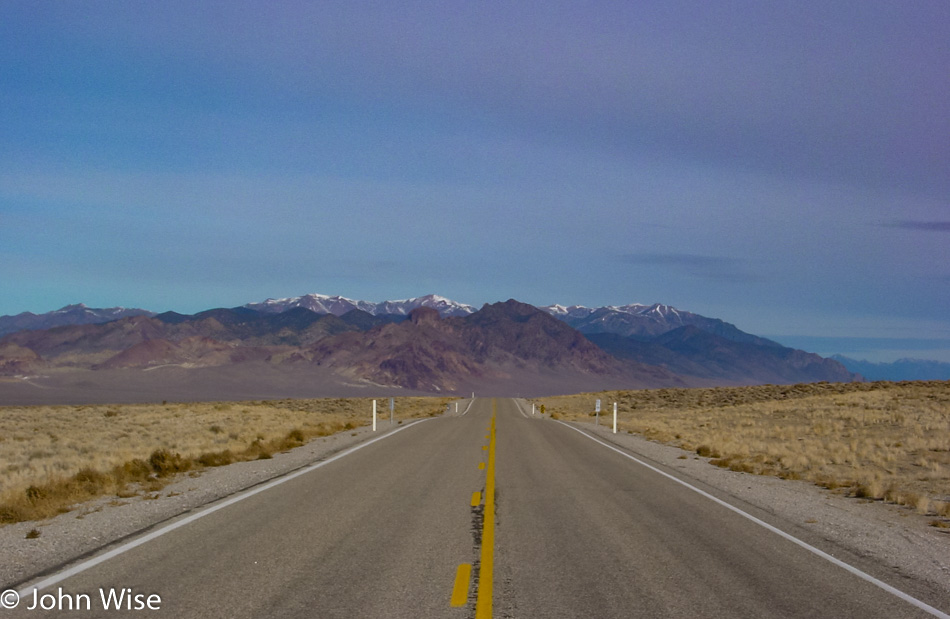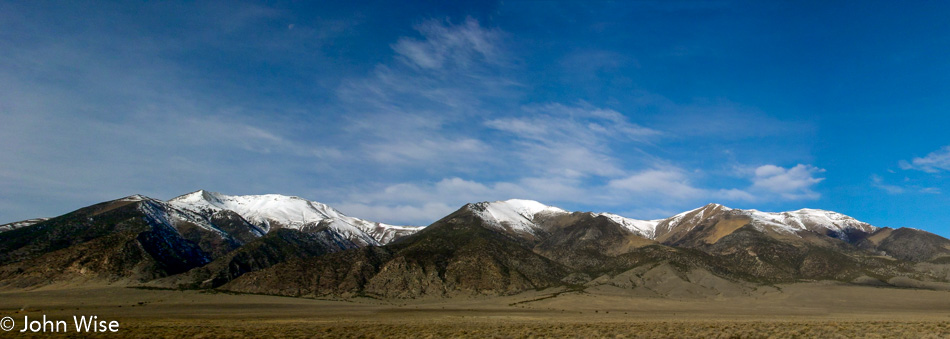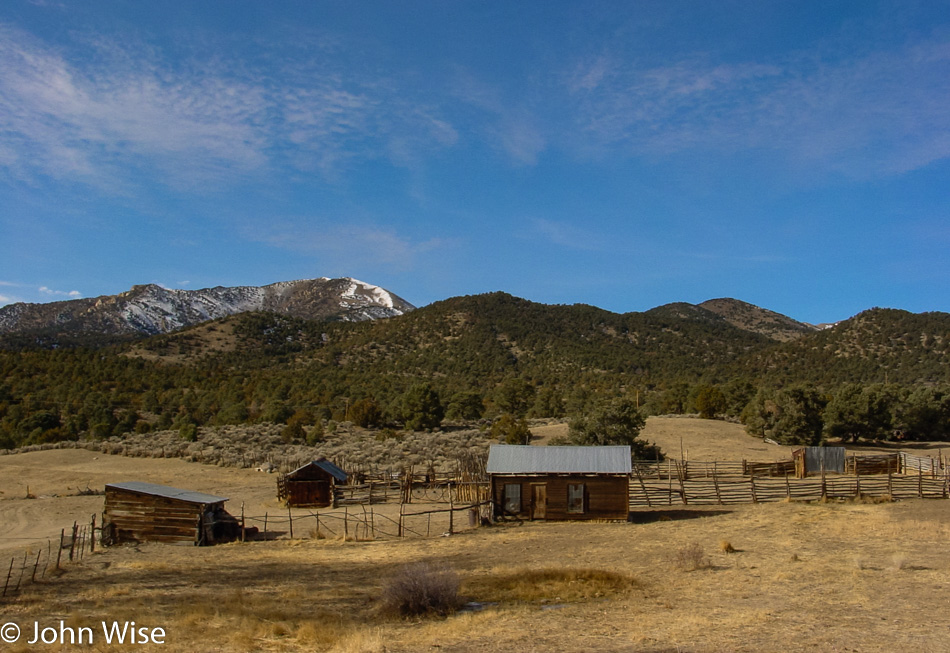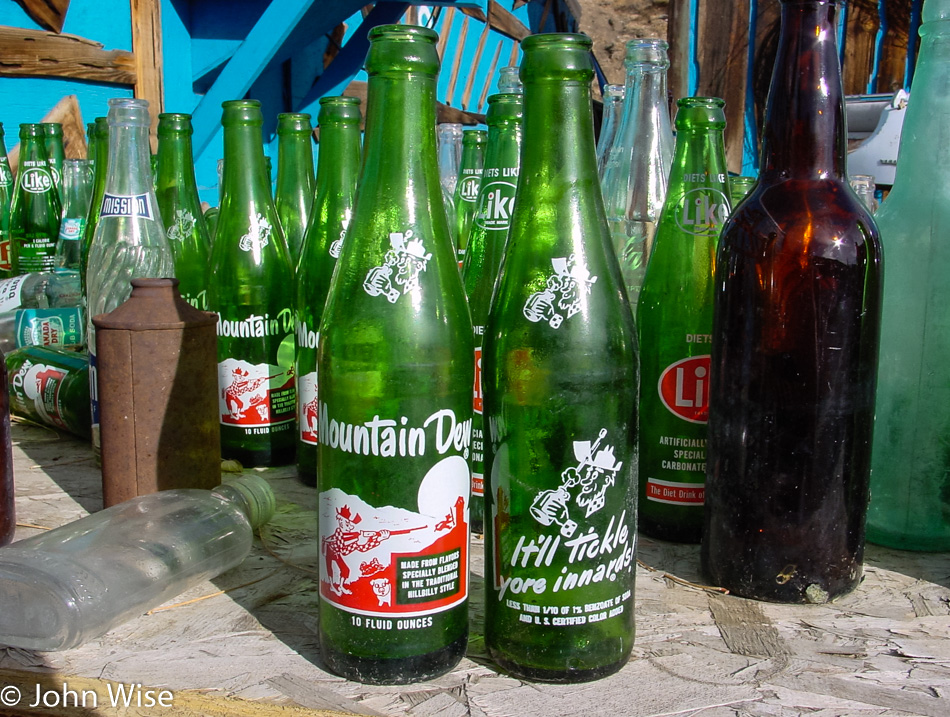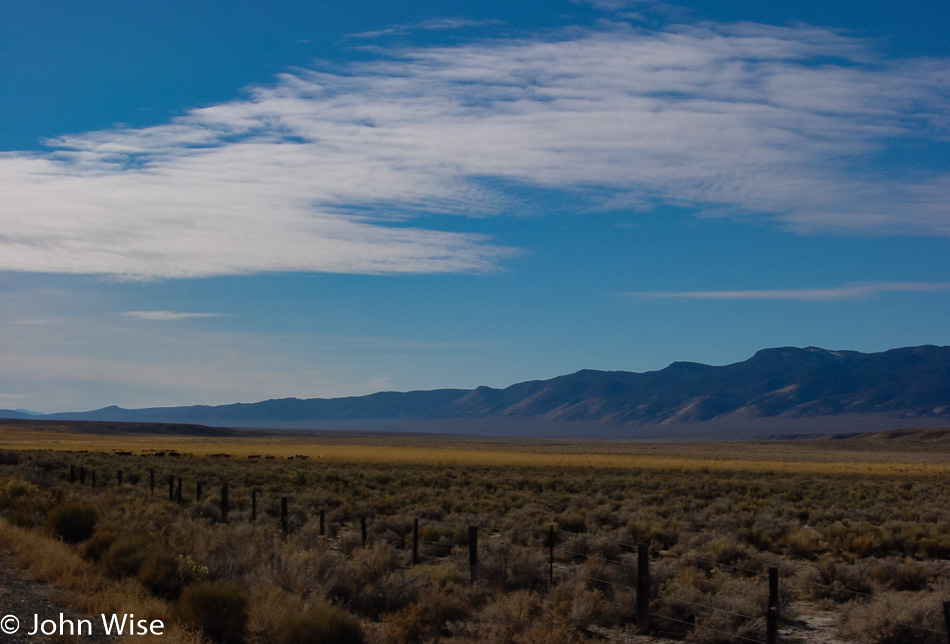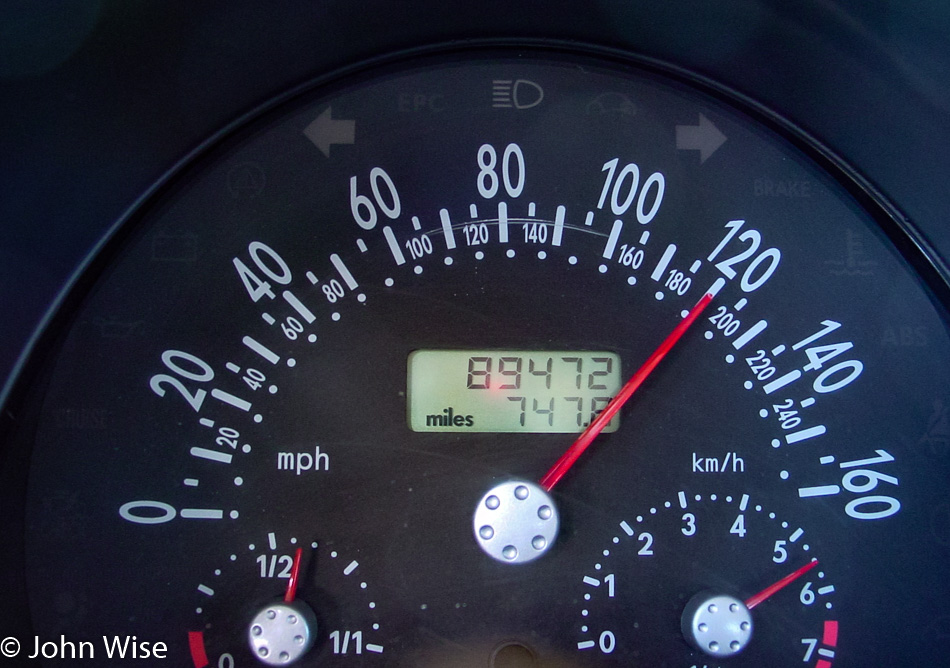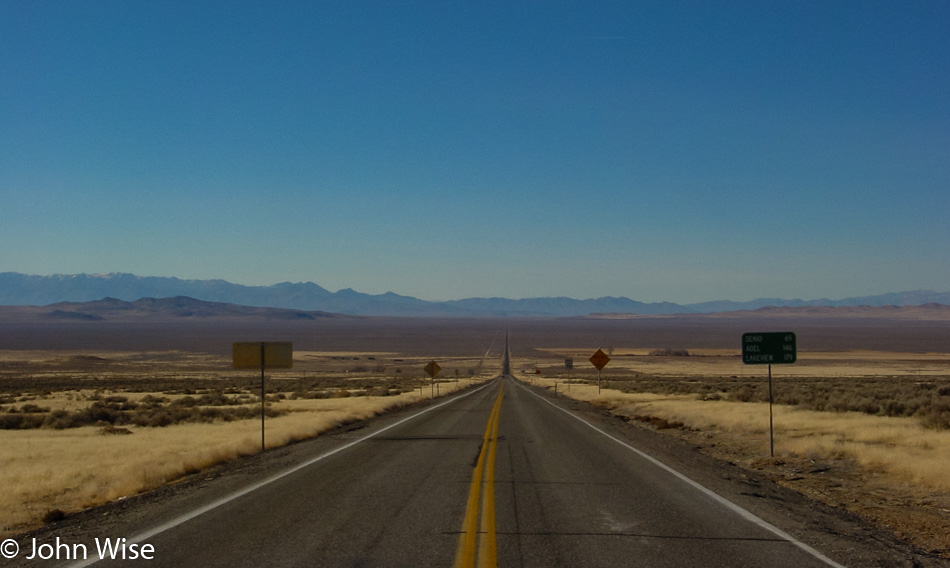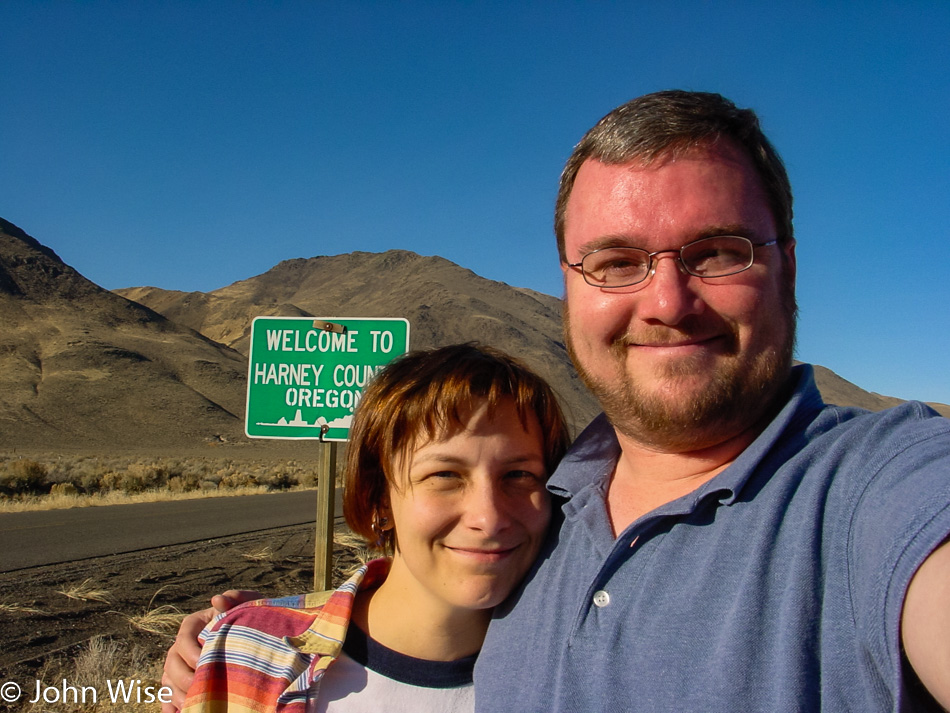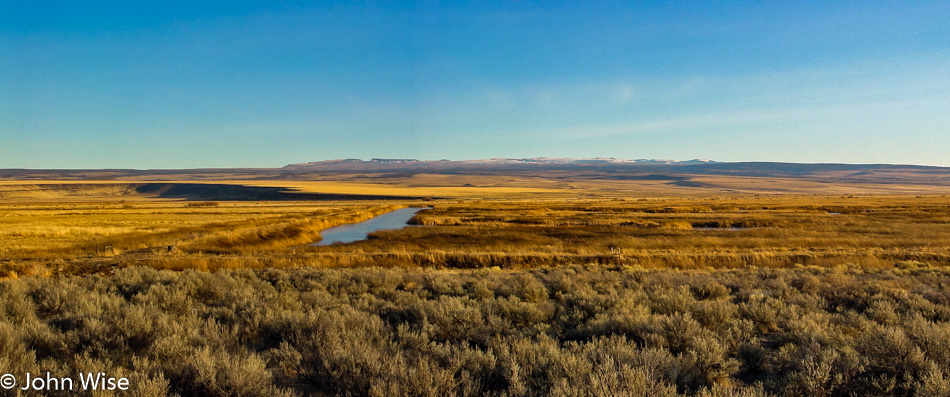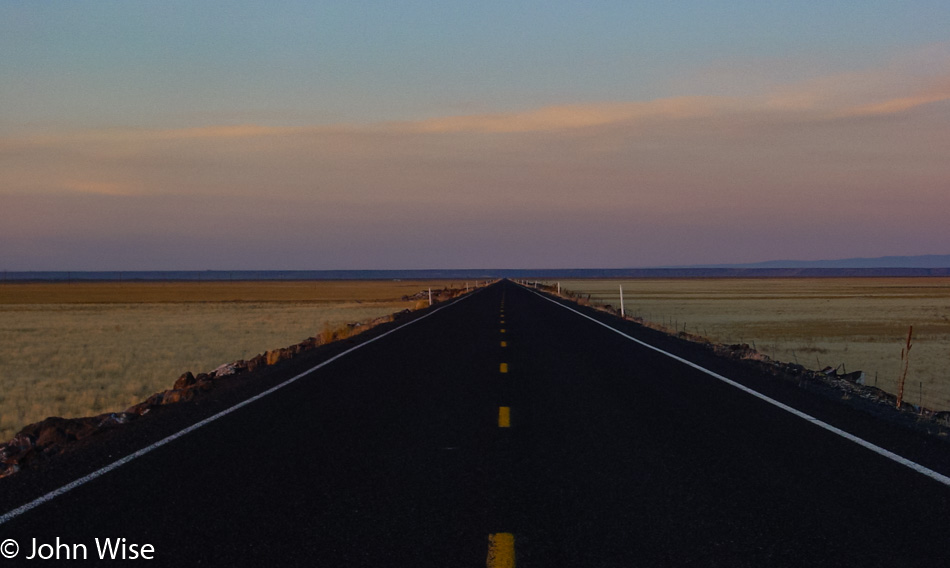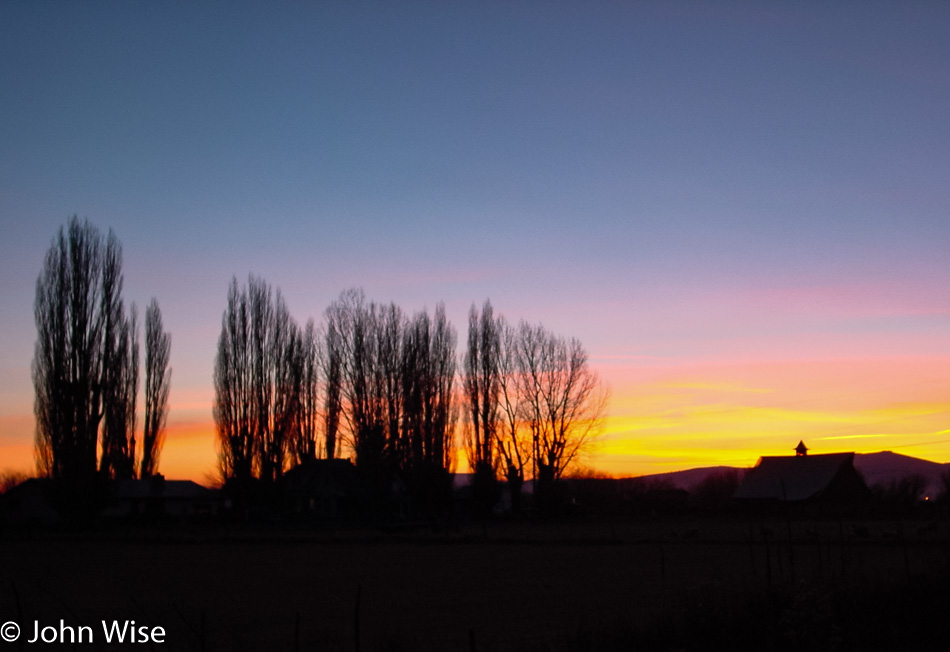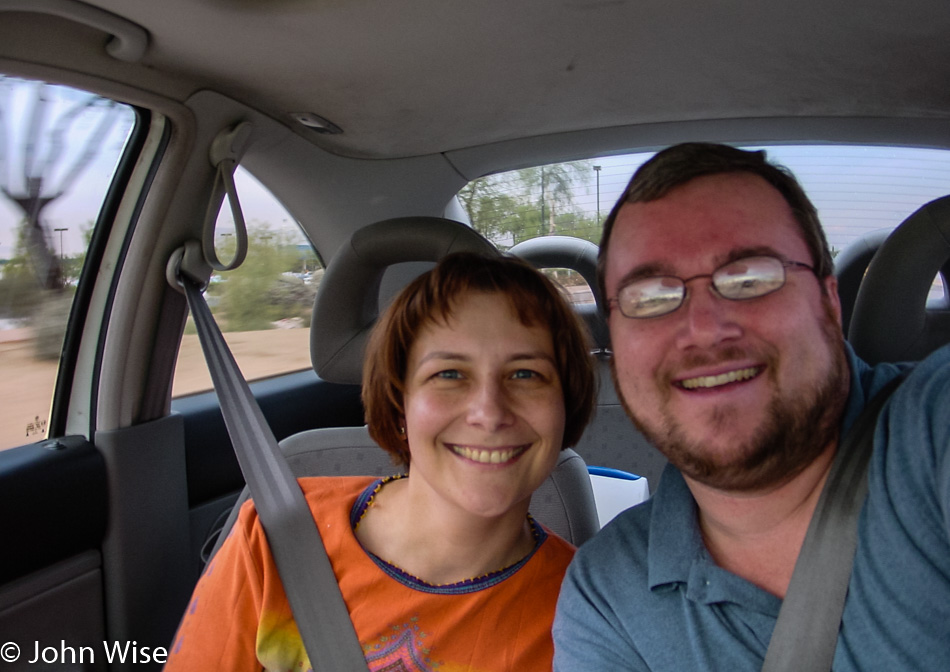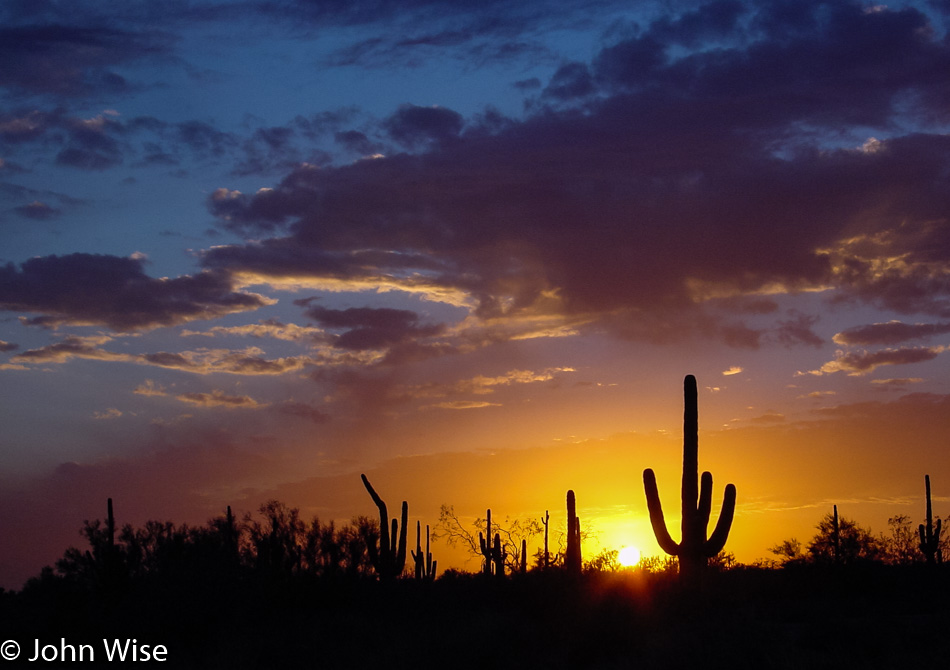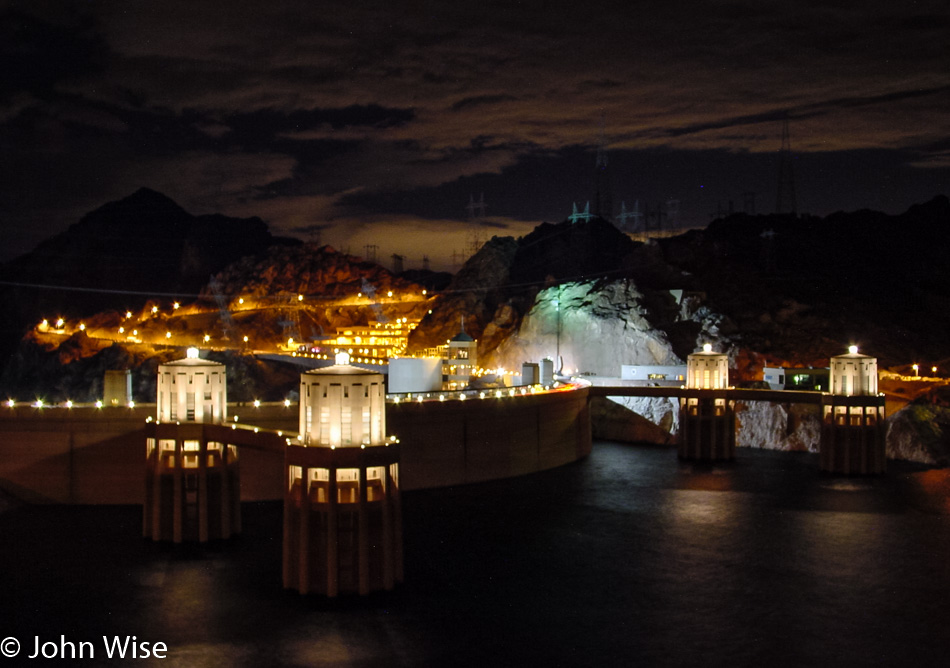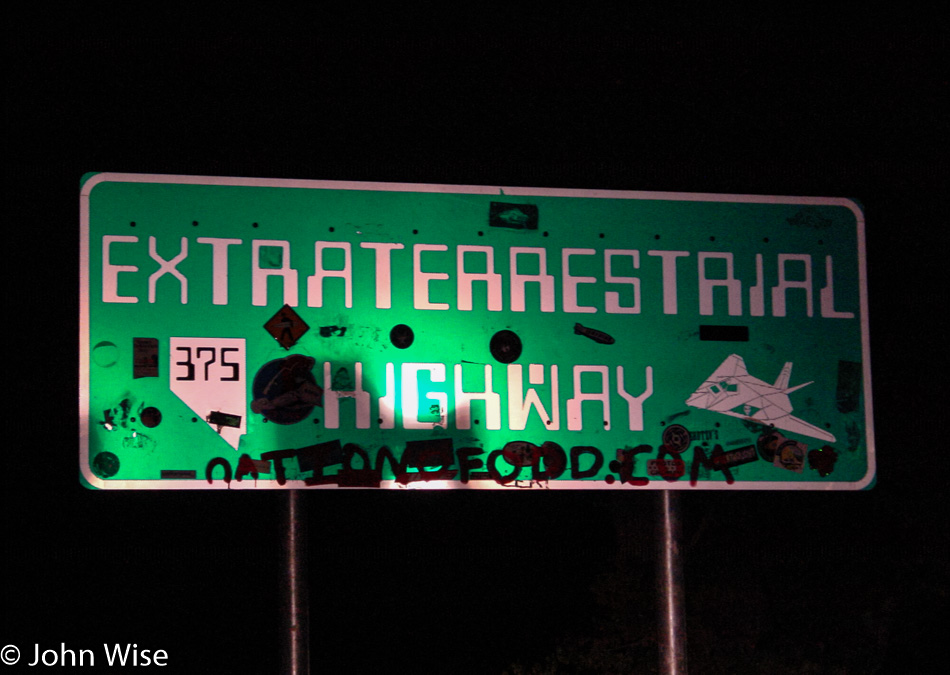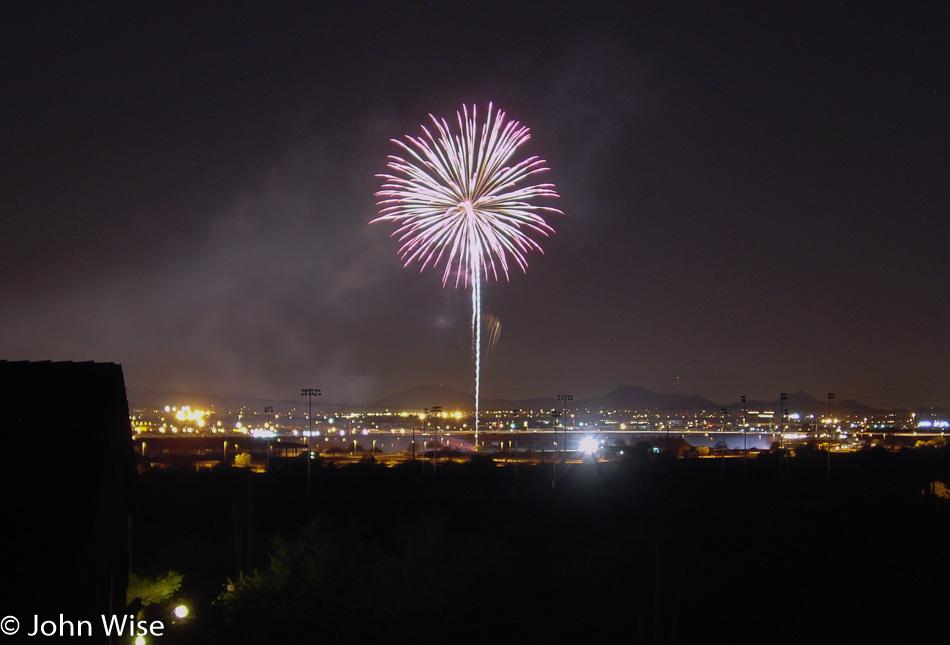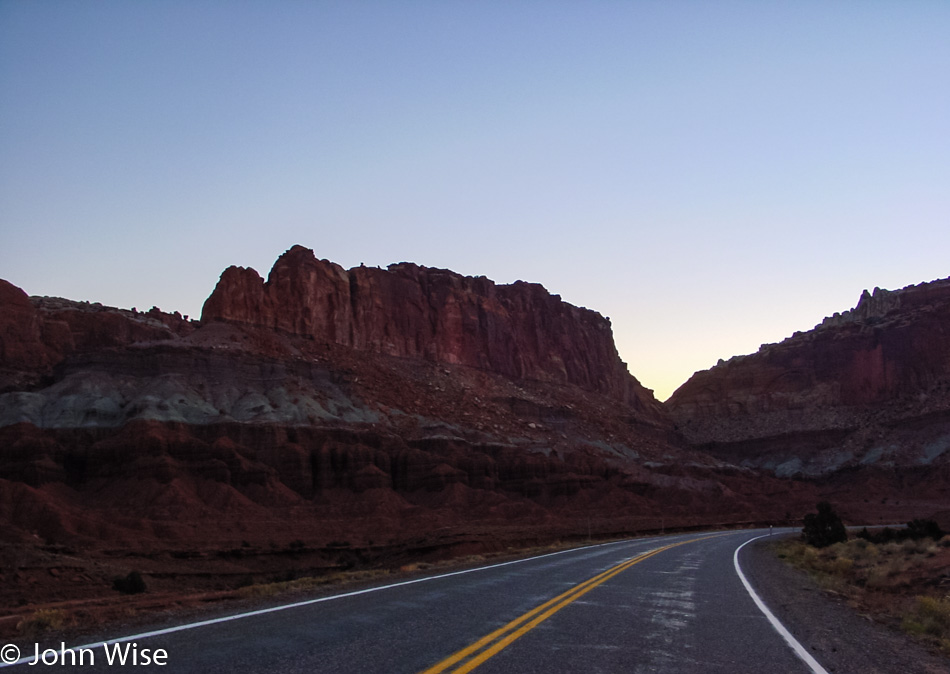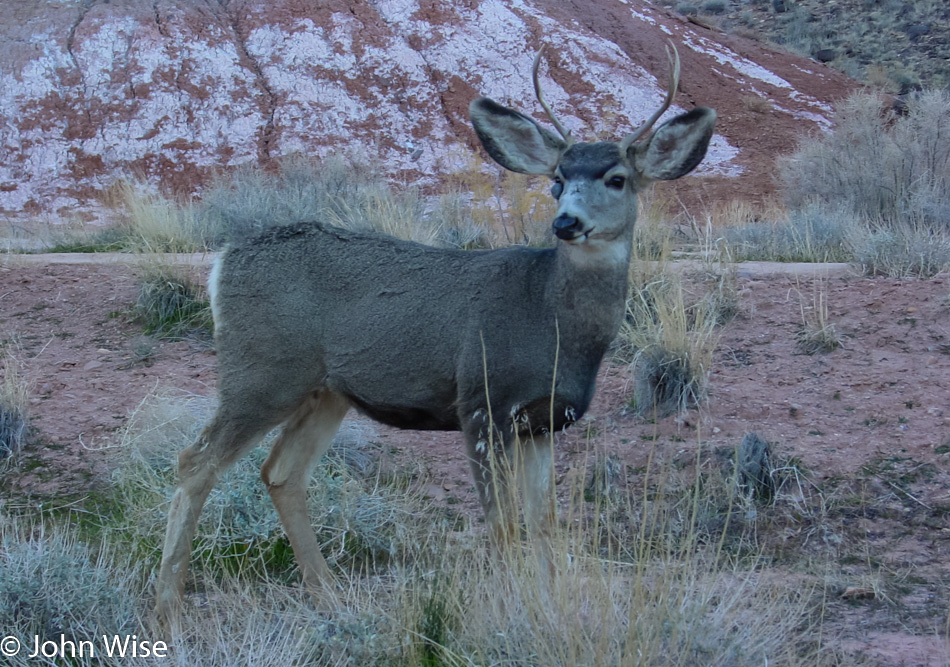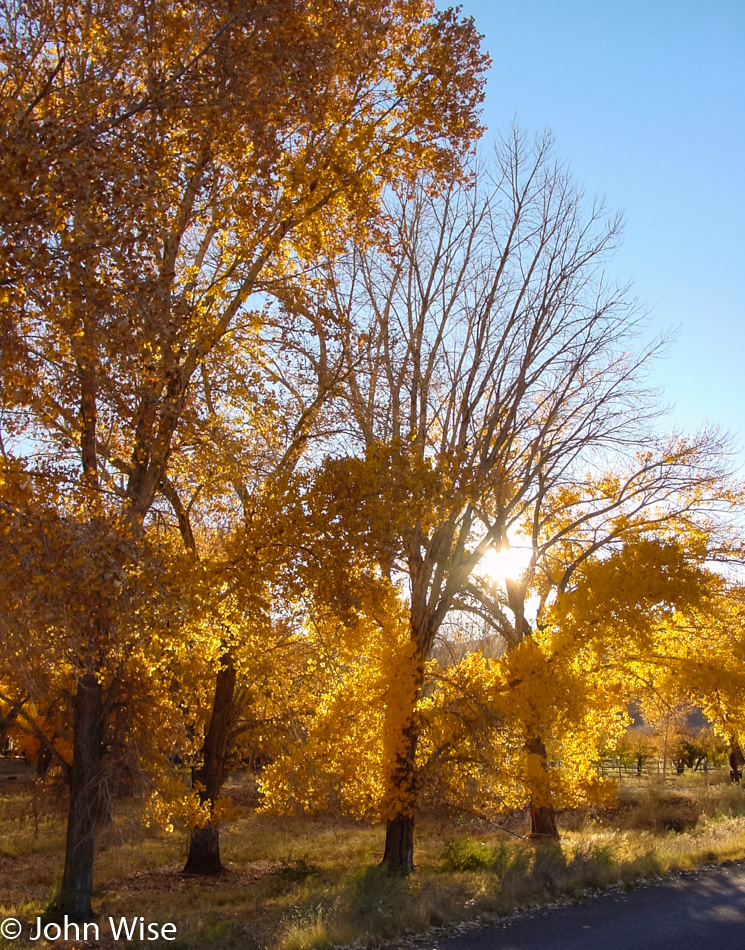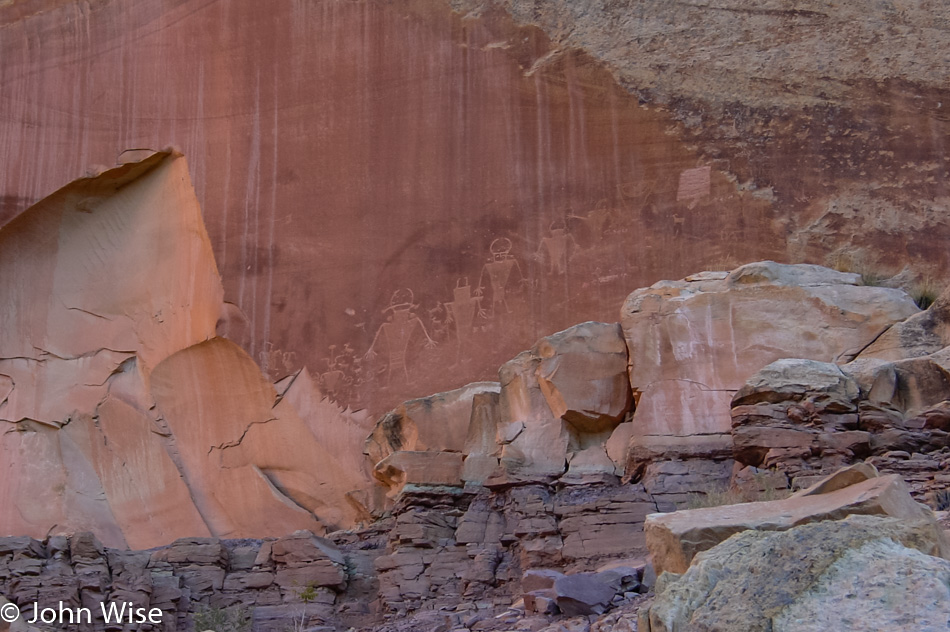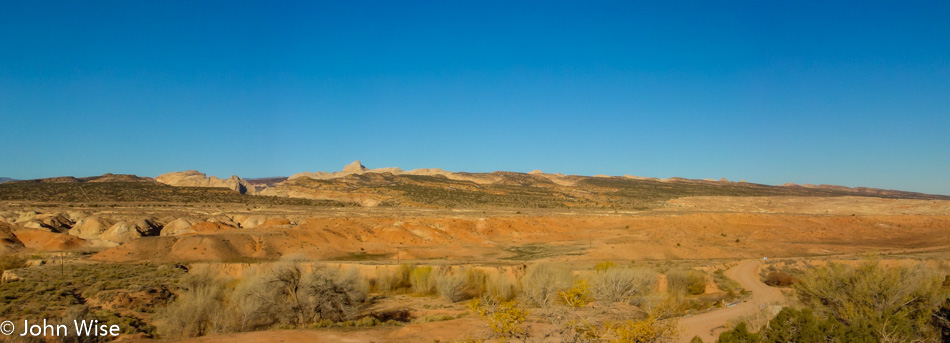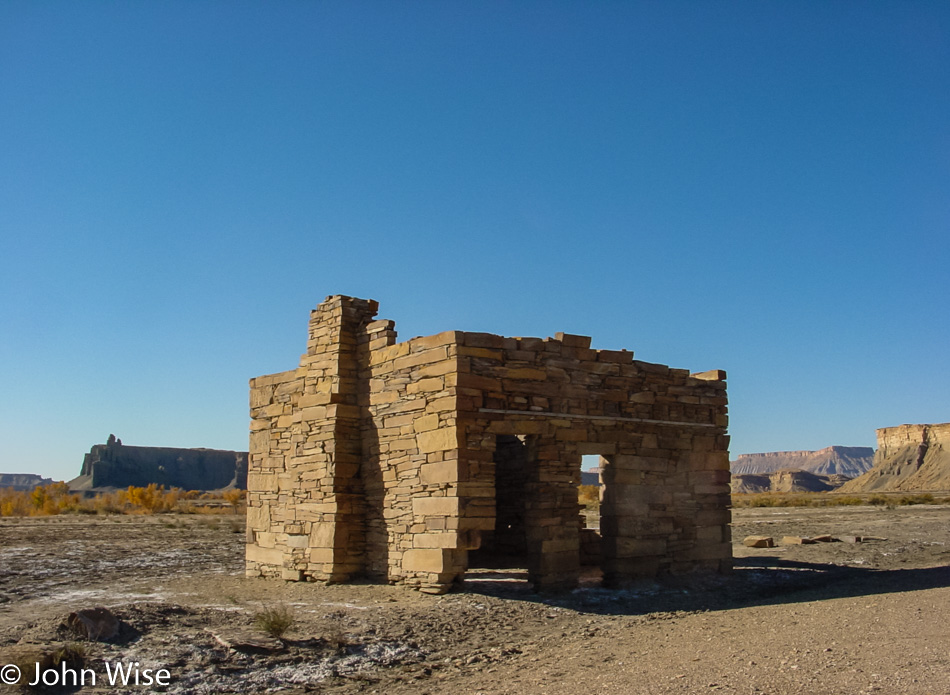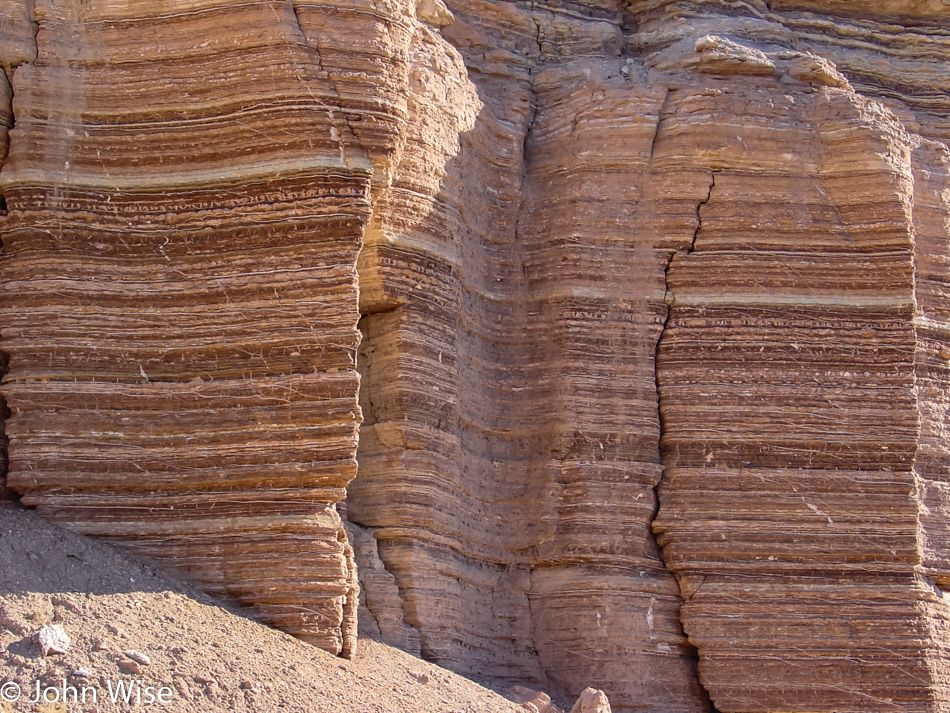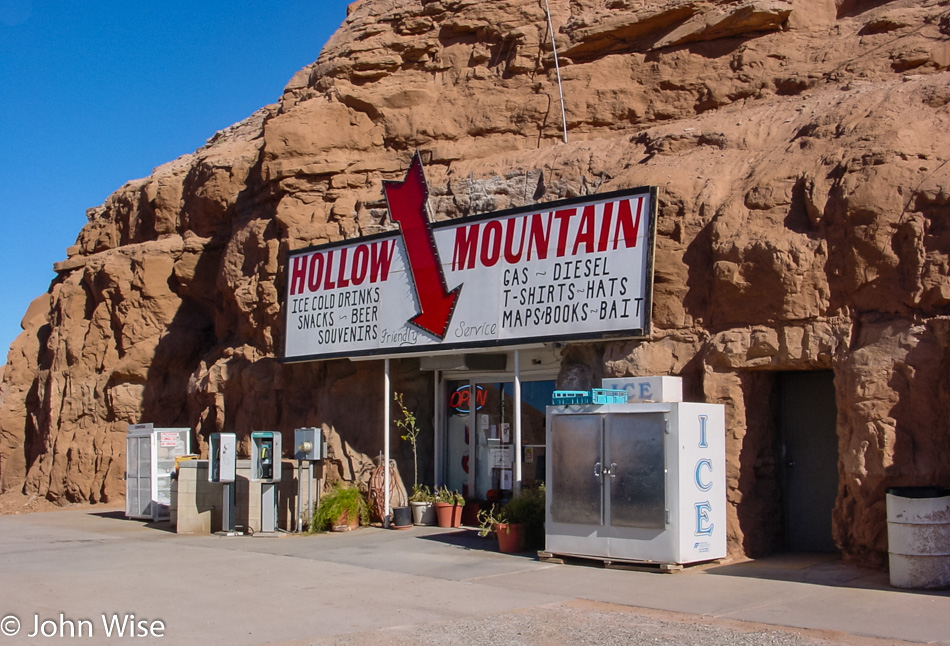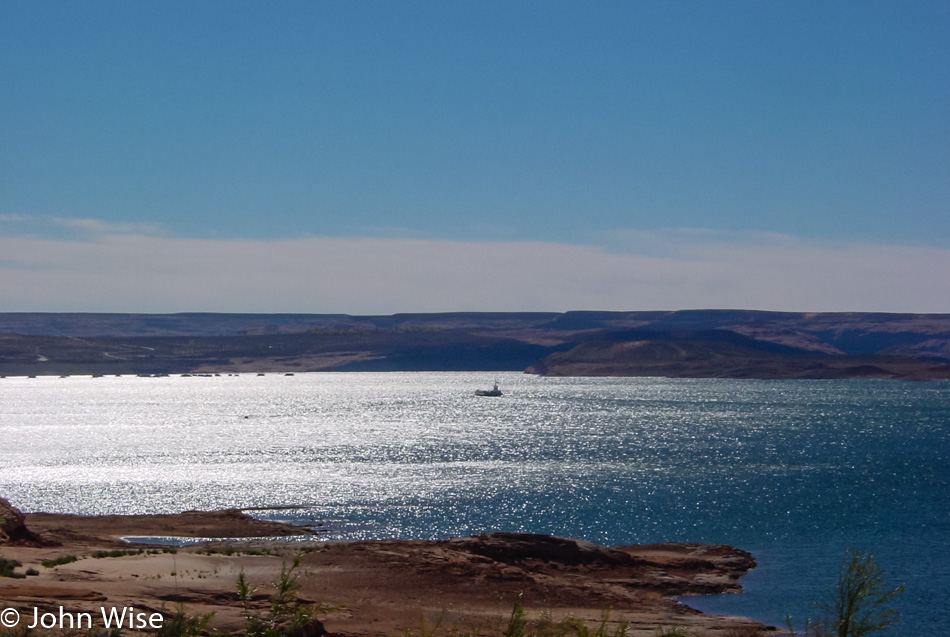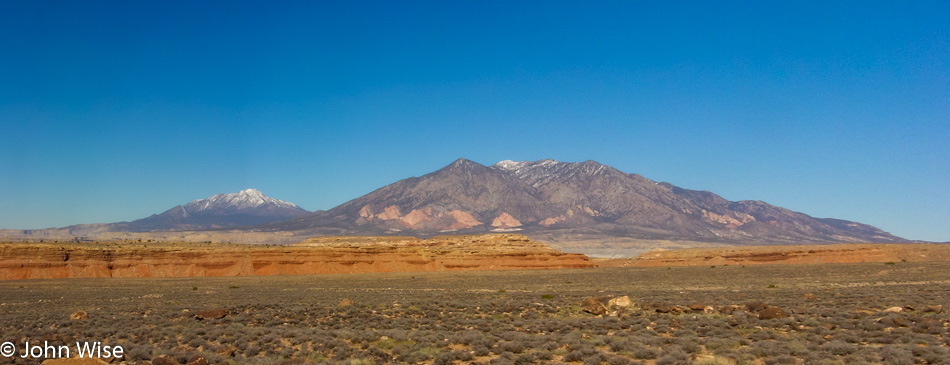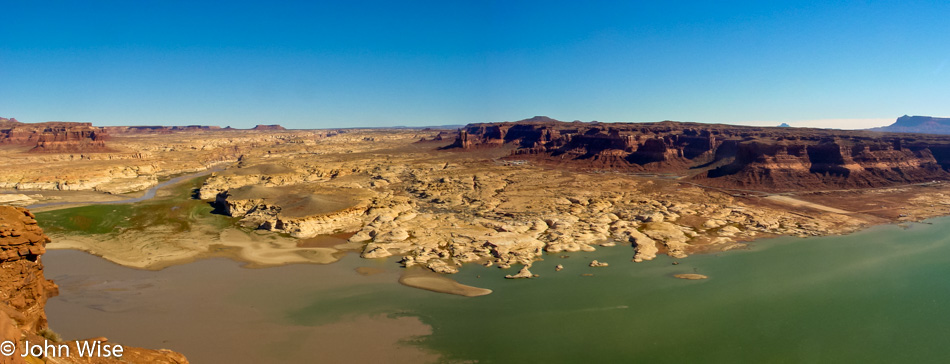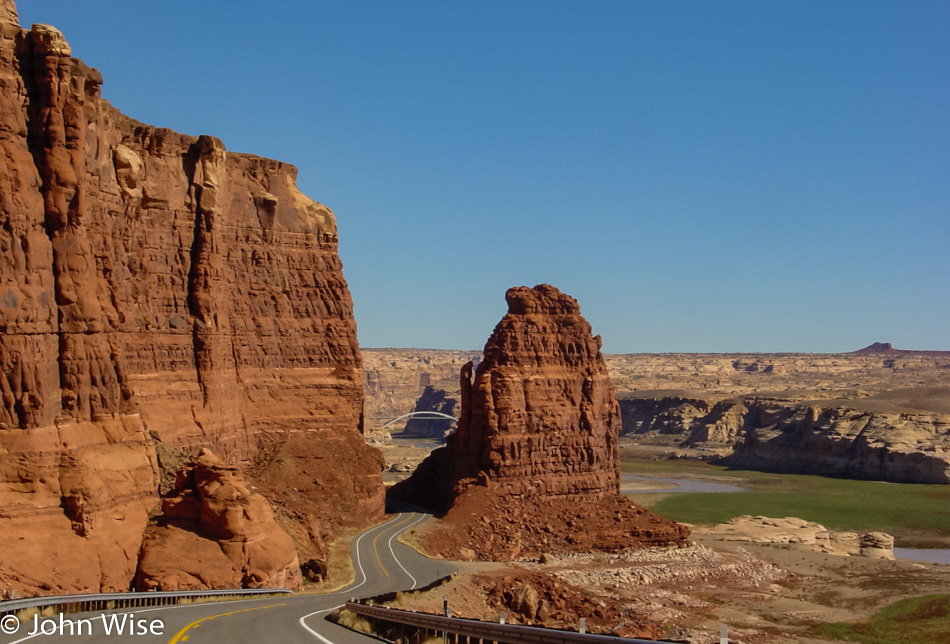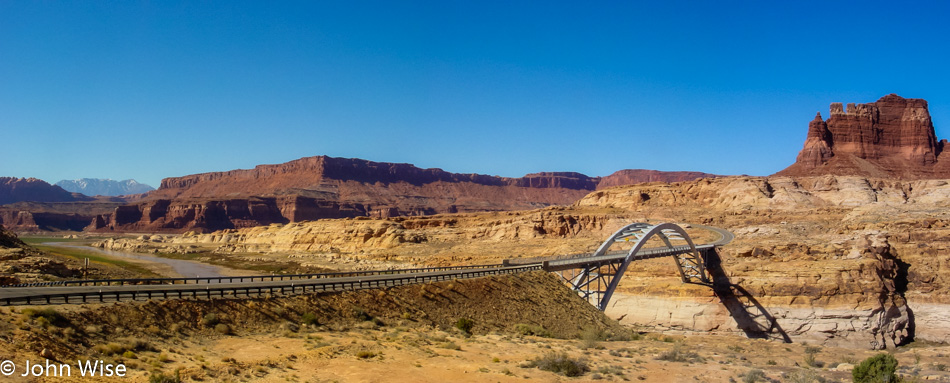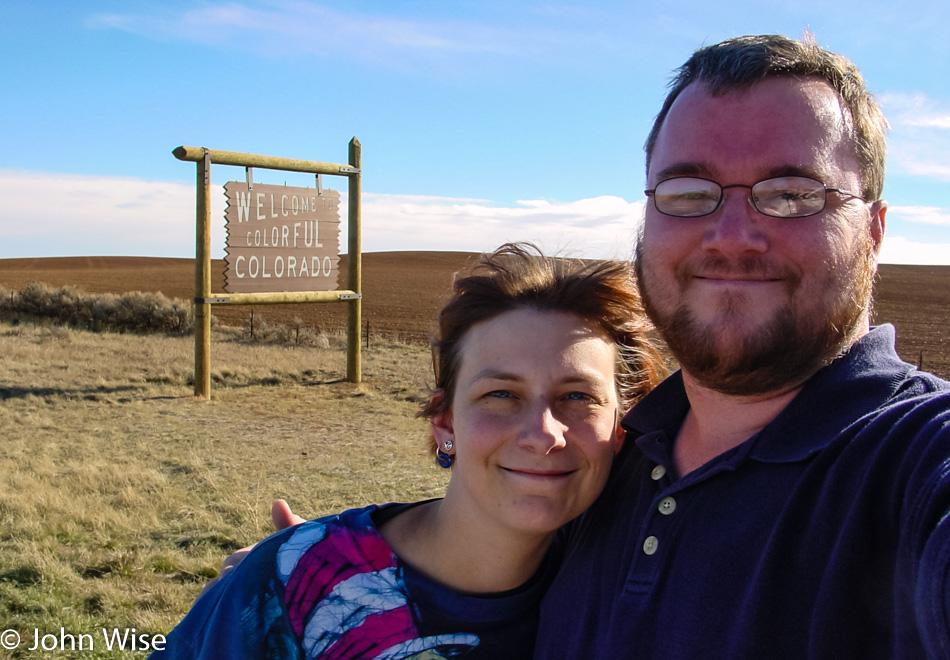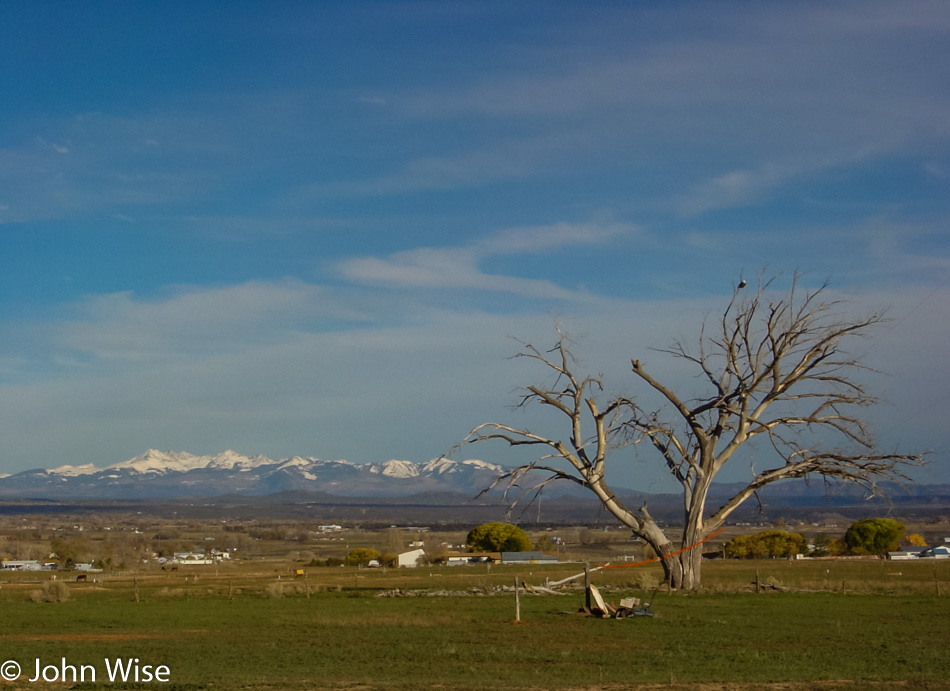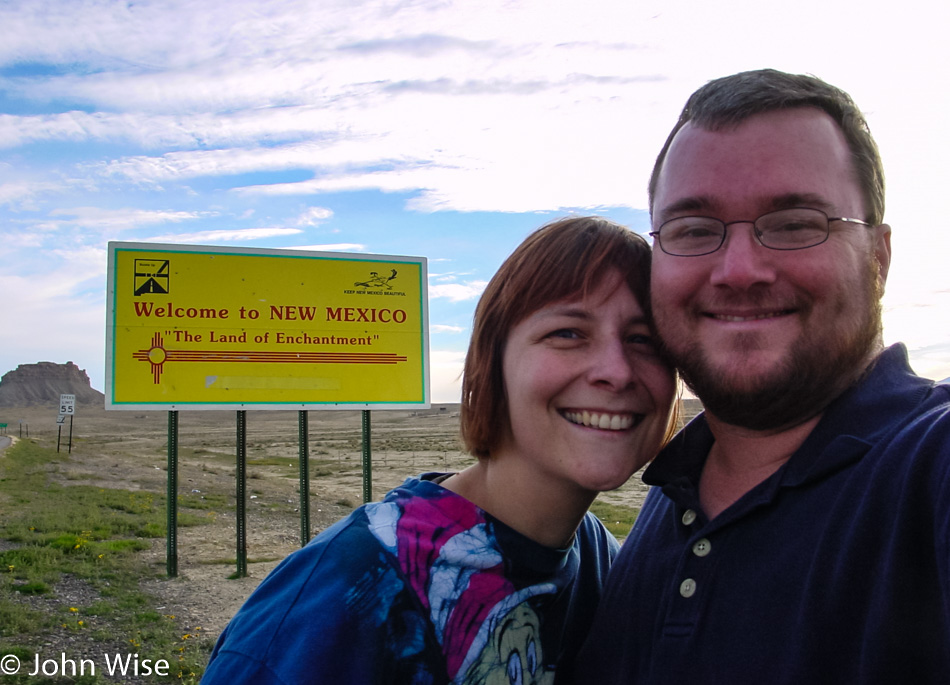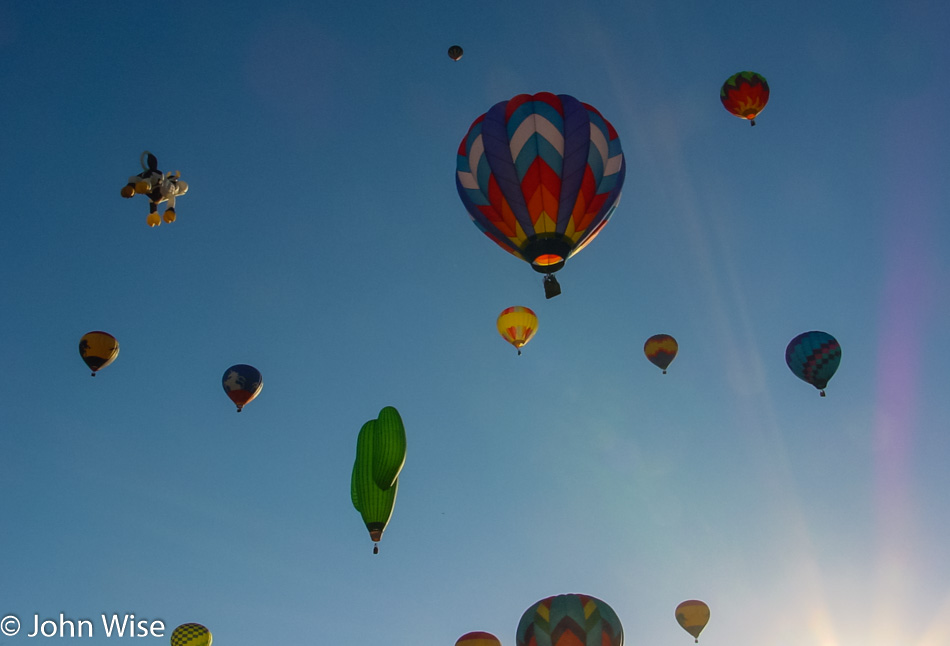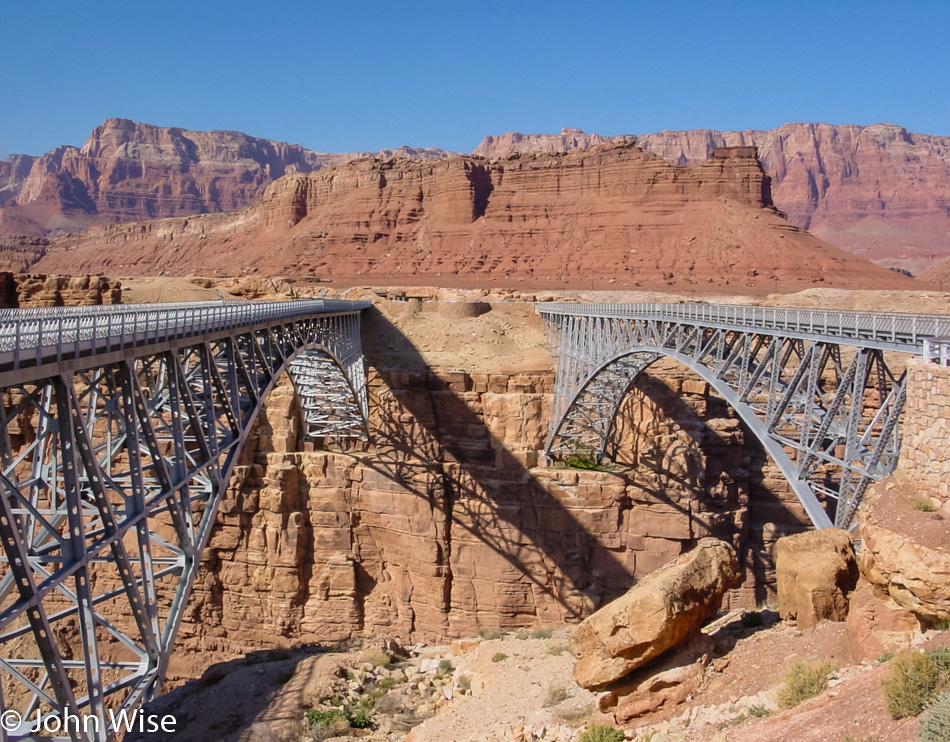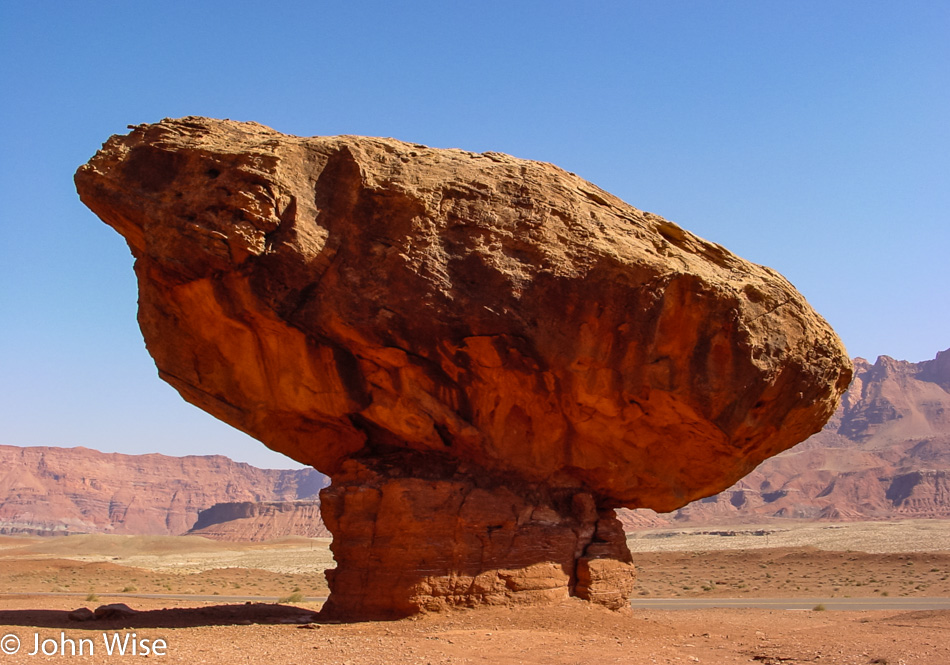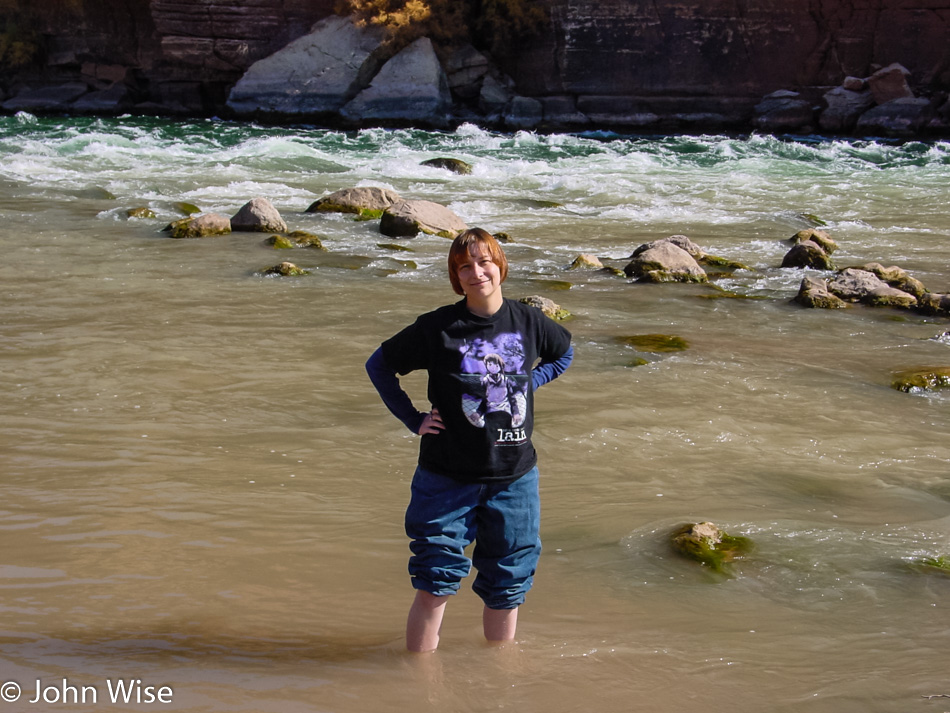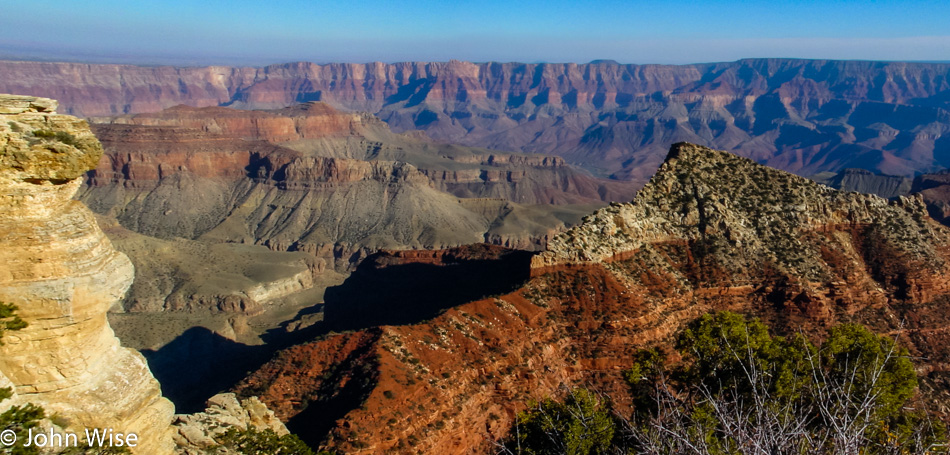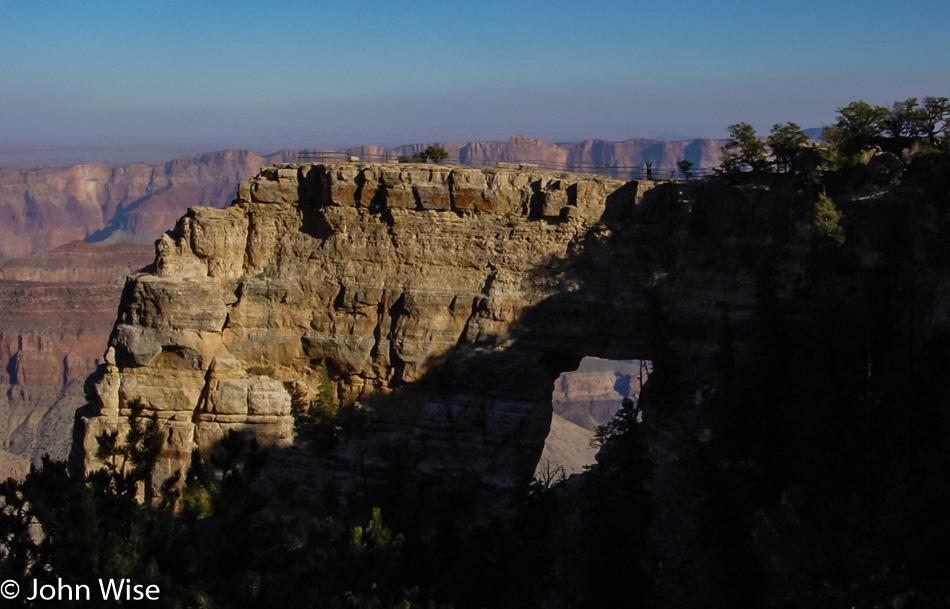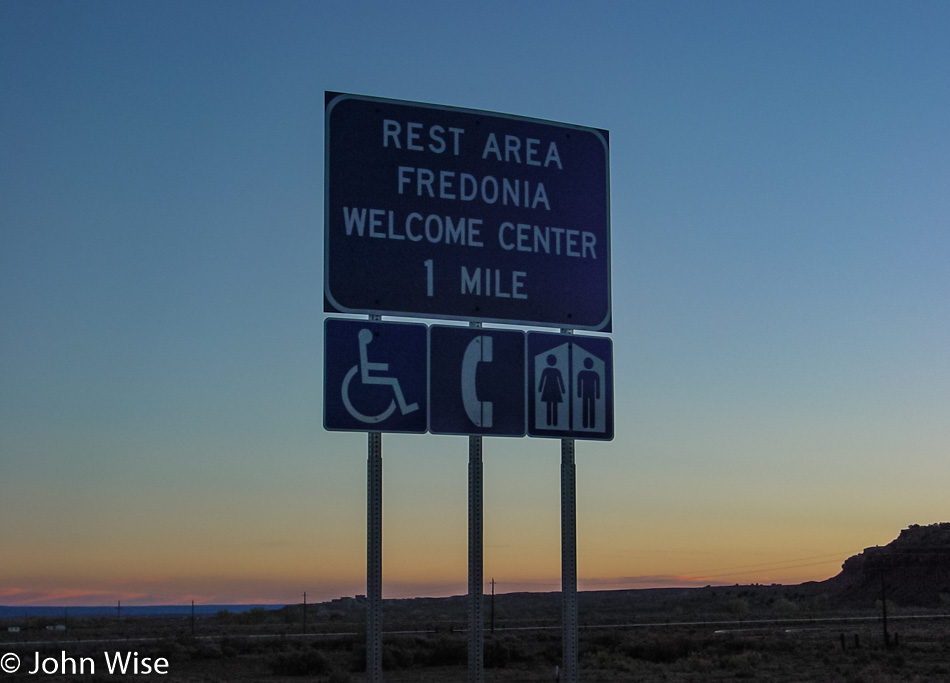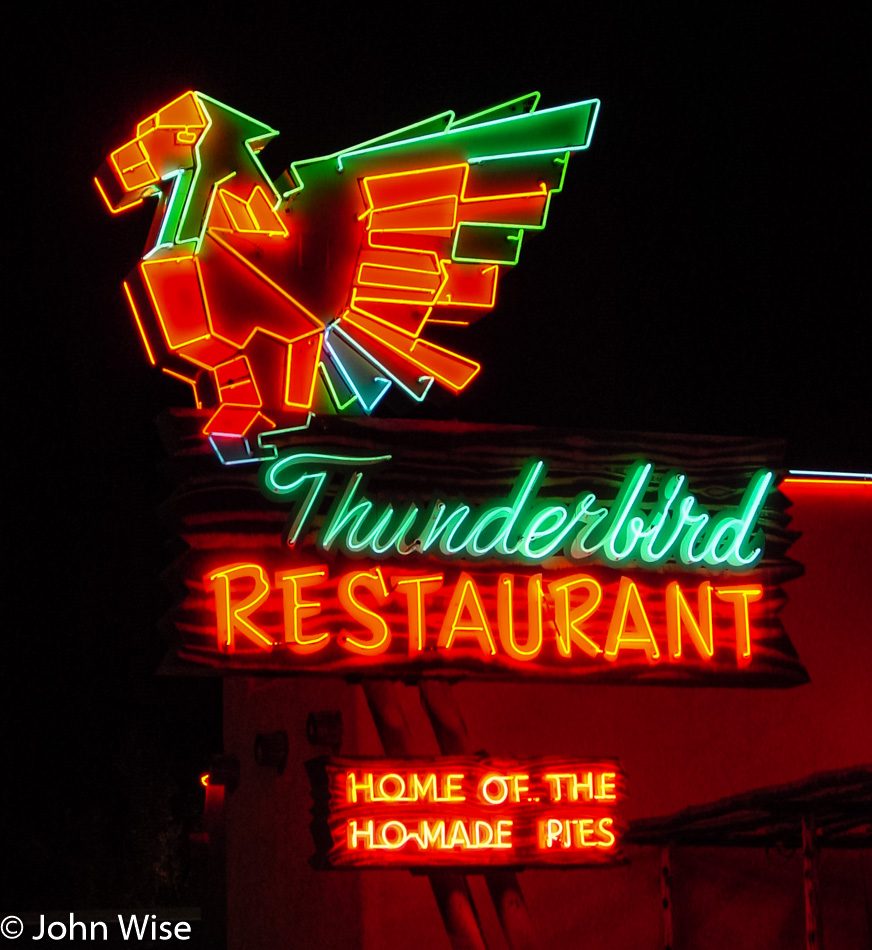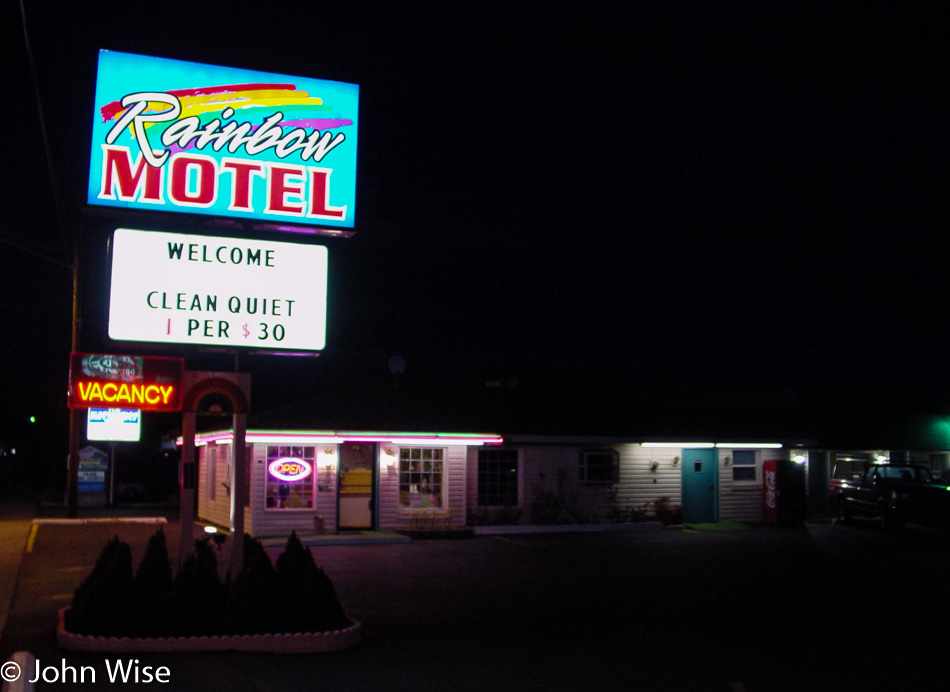
You might be thinking that this photo was taken while we were checking in, but you’d be wrong; we were checking out. Not in the middle of the night either, it’s just that we have a lot of miles to cover, and sleep is not going to deliver us to our destination. Yeah, yeah, yeah, I know the argument that it’s not the destination that’s important but the journey, but if we are sleeping, then we are not on the journey, are we? We spent the night in Bend, Oregon and while many motels use the price on the sign as bait, this one delivered, and we only paid $30 for a room.
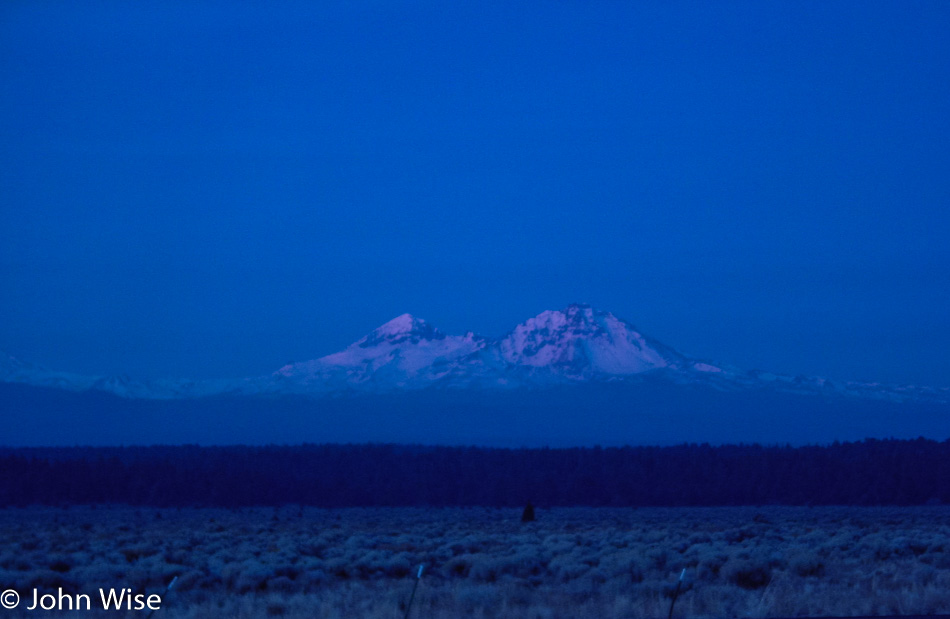
Blue mountains in the early dawn, better known as Middle Sister (left), Black Hump (center but small), and North Sister (right).
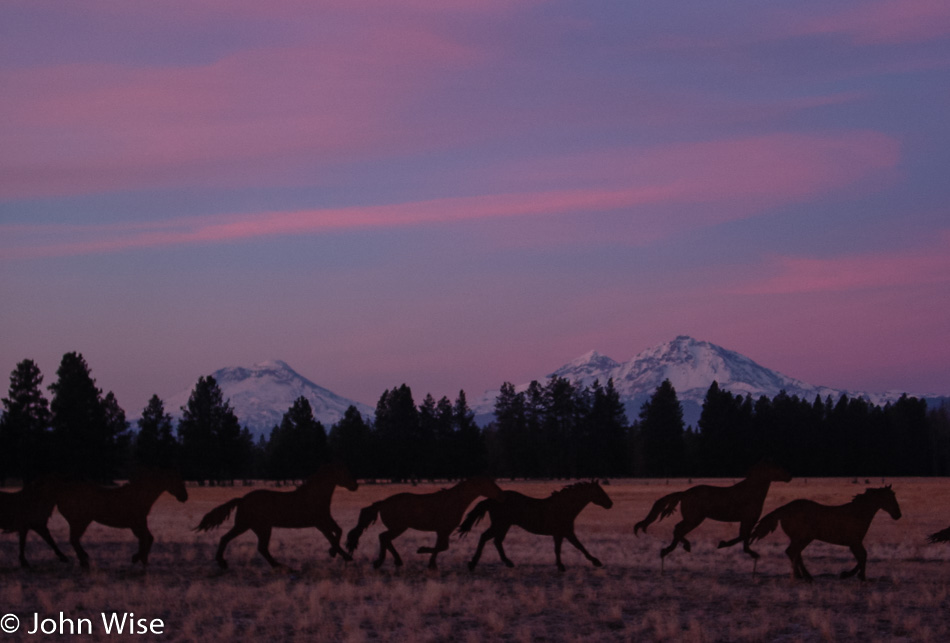
Pink mountains as the morning arrives for the Three Sisters.
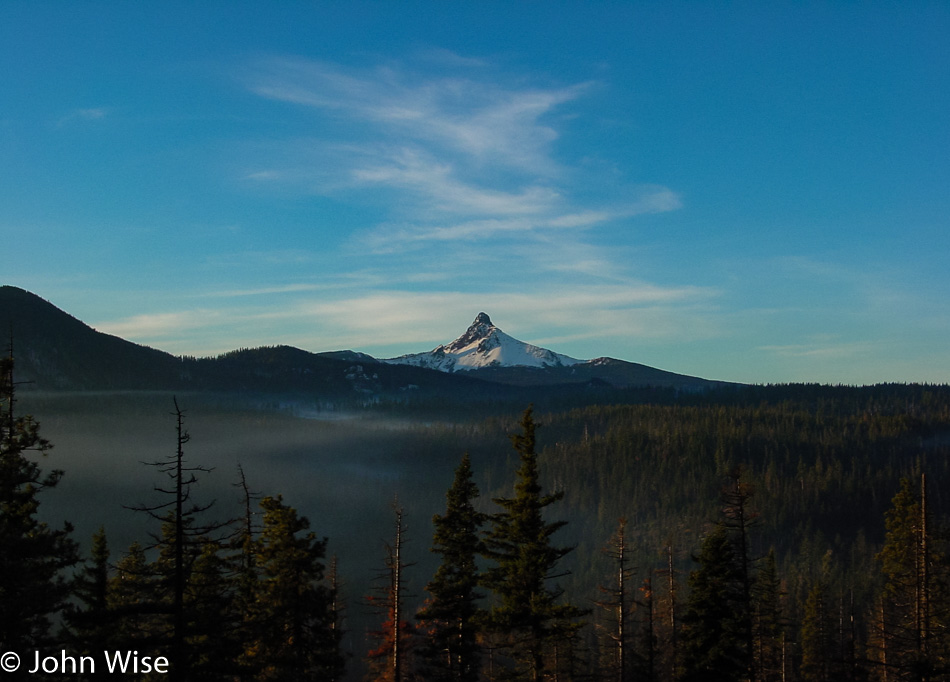
Crystal clear peak of Mount Washington in the light of the early sun.
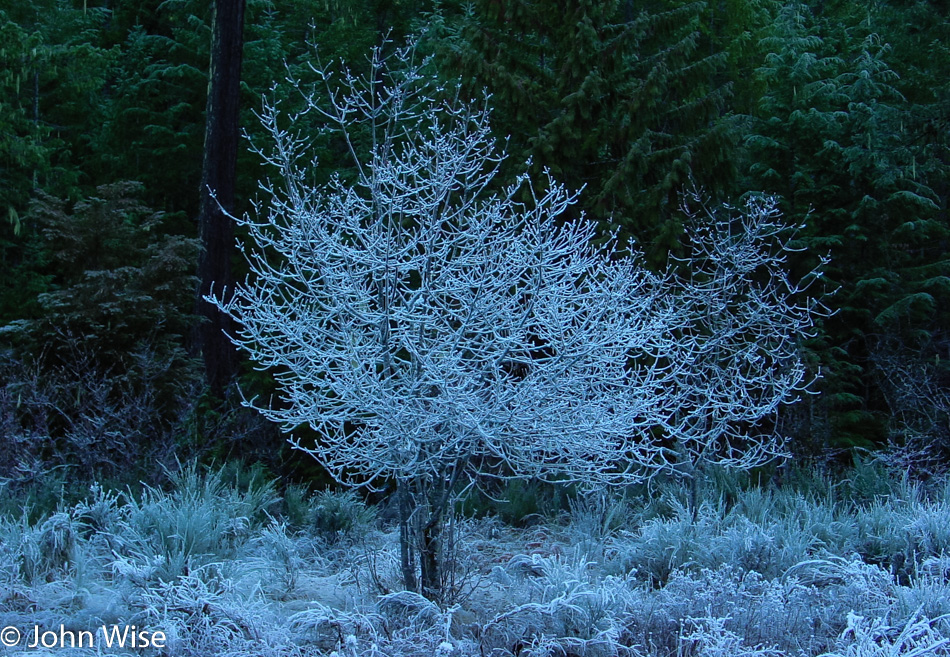
Maybe the frost will melt off as the radiant heat of our local star reaches down from the mountain peaks and touches the lower surfaces of our planet.
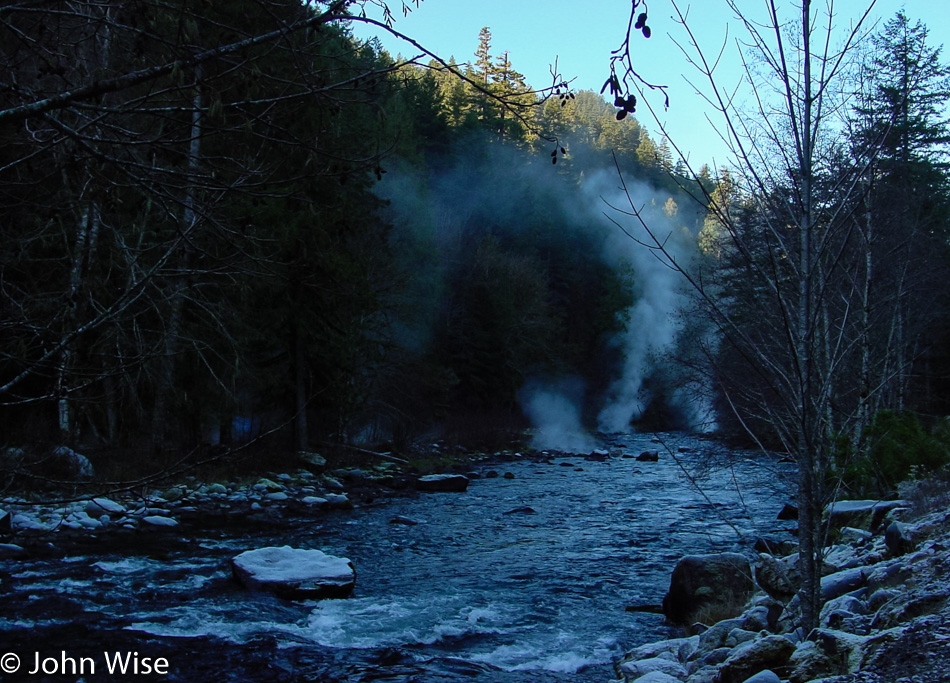
I suppose that in a state that sits astride the Ring of Fire, it should not come as a surprise that the earth is boiling just below the surface, but still, I can’t help but stare upon the spectacle of the land belching steam that portends greater things happening below beyond our gaze.
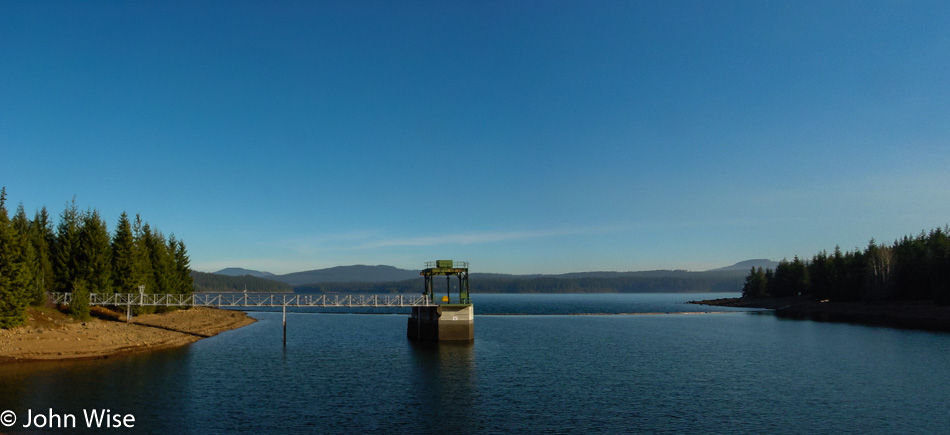
We got off the road for a moment to find a view of Timothy Lake off National Forest Road 57.
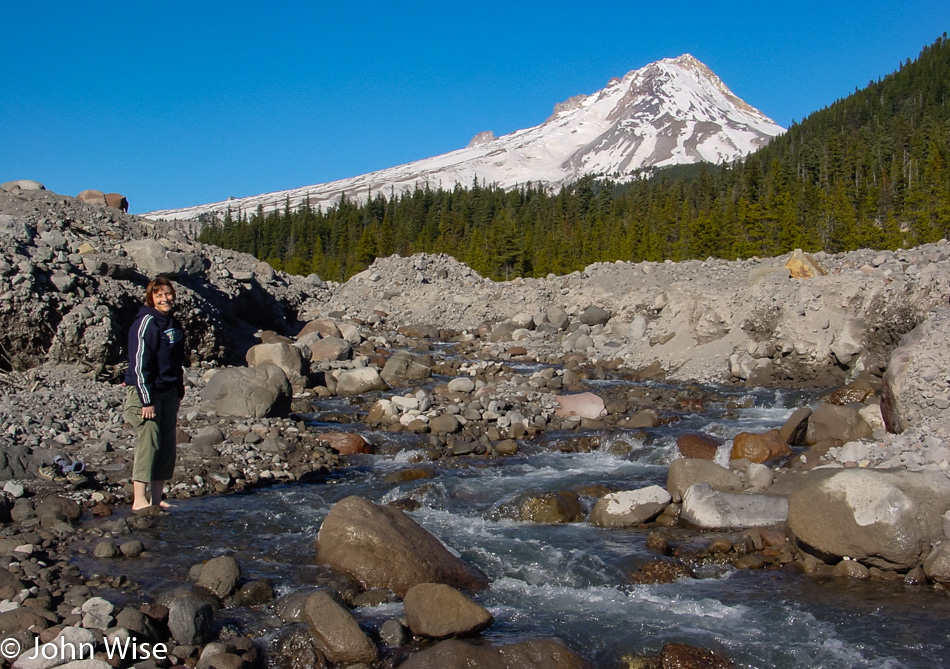
And then it was on to Mount Hood for a better view of the mountain when we spotted this stream where, of course, Caroline would have to doff her shoes once again to stand in one of America’s waterways.
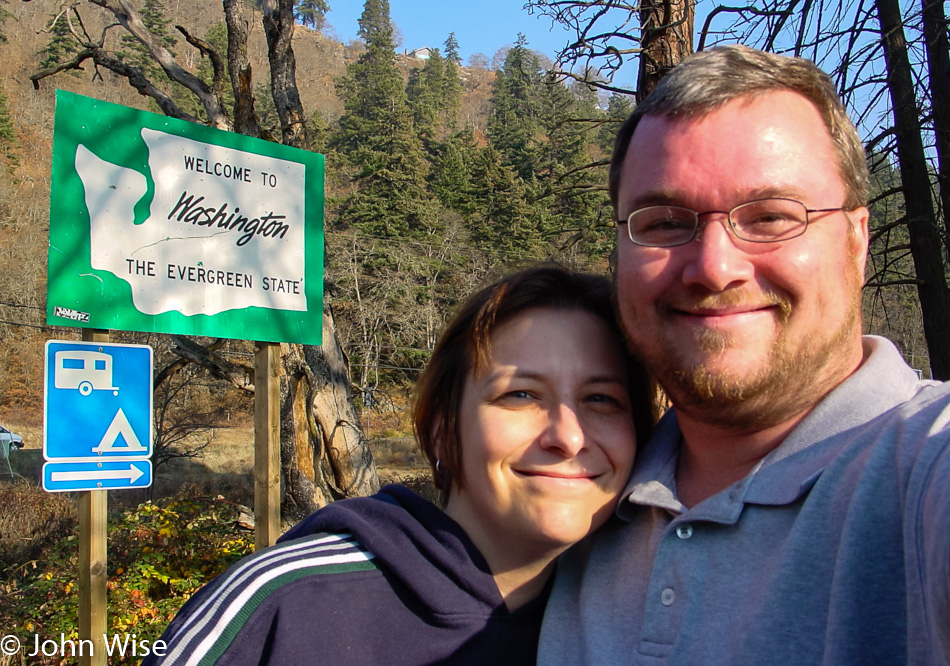
Add another state to the number we have visited as we step into Washington for the first time.
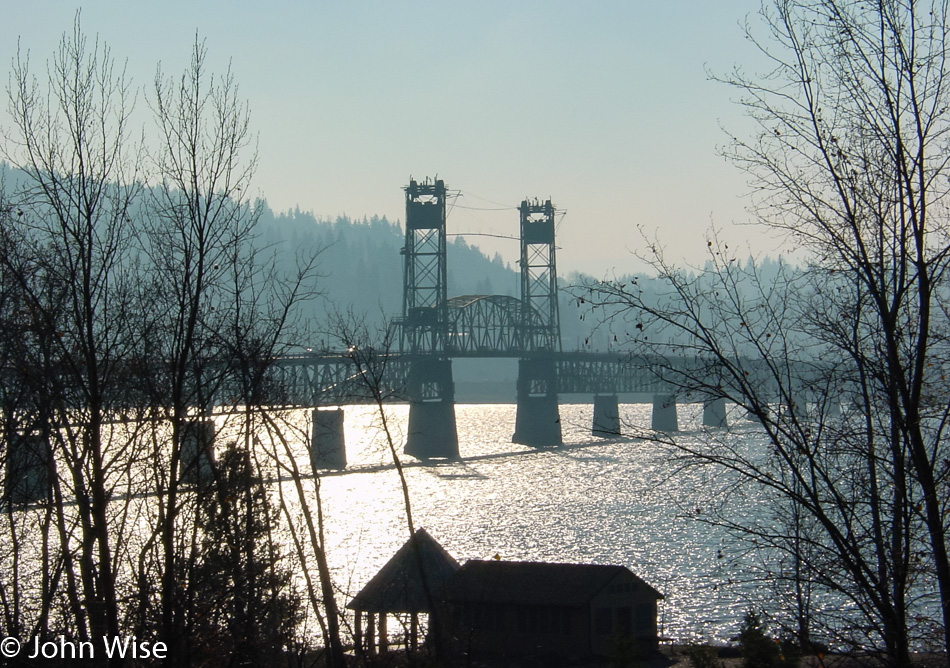
This is why we are happily married; we are both suckers for bridges. That’s right; nothing else binds us together quite like our fascination with these water-and-canyon-crossing human-engineered pathways. Love is a great bridge; just think about it for a second.
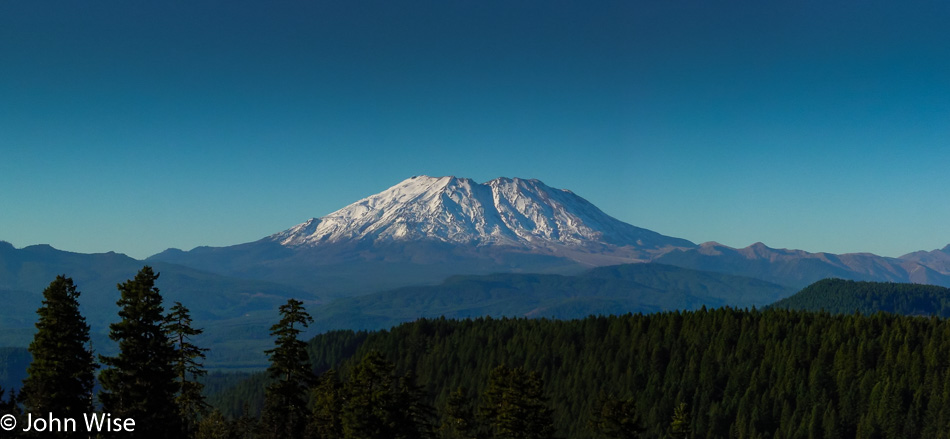
It is pretty exciting, almost intimidating in some way actually, to visit a volcano that has been explosively active within our lifetimes. Mount St. Helens blew up back on May 18, 1980, and lowered the peak of this mountain by 1,300 feet. The violence the eruption unleashed was responsible for the death of 57 people caught up in the wrong place at the wrong time.
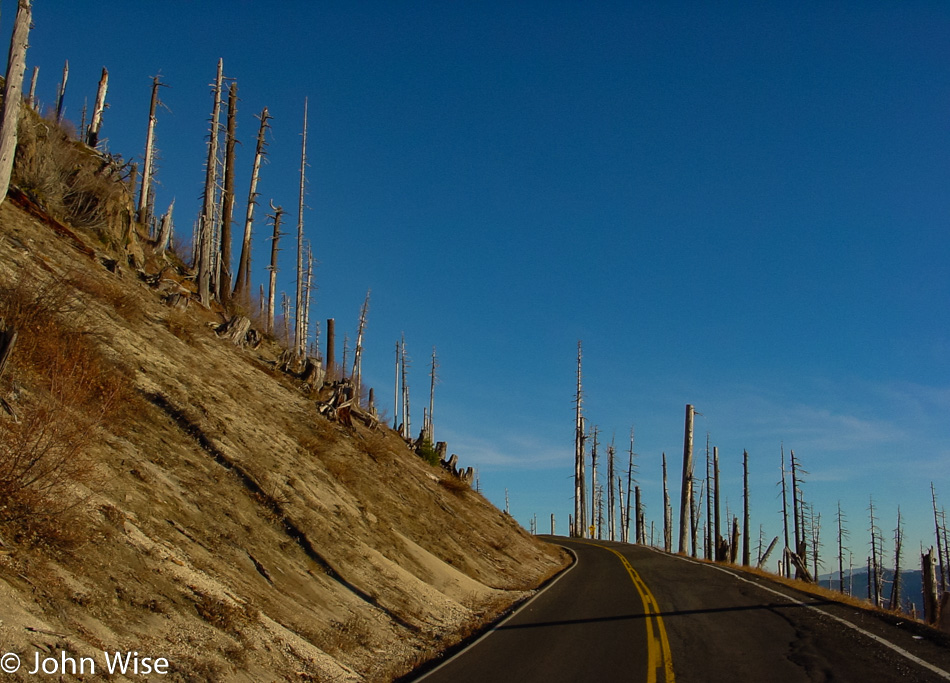
Twenty-two years later, the force of the blast is still on display, with trees stripped bare and lifeless from being pyrolyzed in the intense heat.
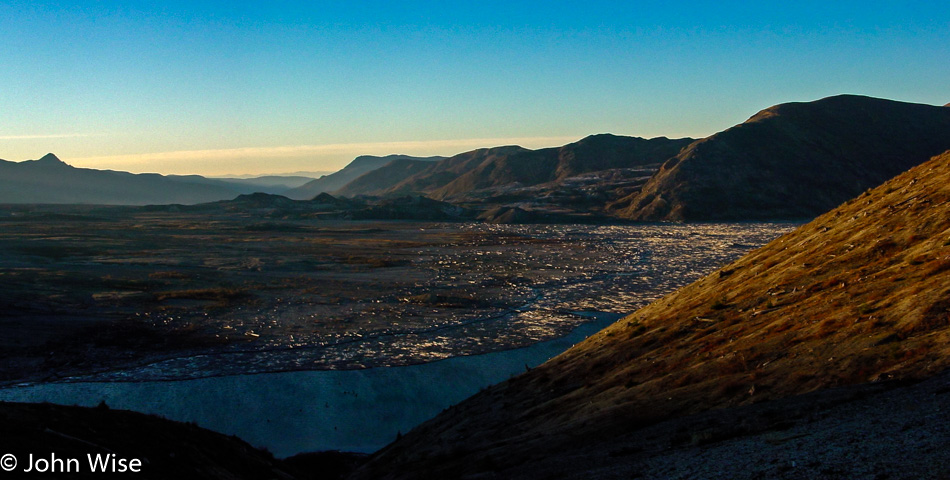
Spirit Lake is filled with thousands of logs from the more than a million trees that were blasted down following the eruption of Mount St. Helens. The force of the volcano nearly drained the lake, creating waves up to 600 feet tall (183 meters) that crashed into a nearby ridge before settling back into its basin pulling a bunch of trees with it. The lake has been left as is following this calamity for scientists to study the impact of this once-in-a-lifetime event.
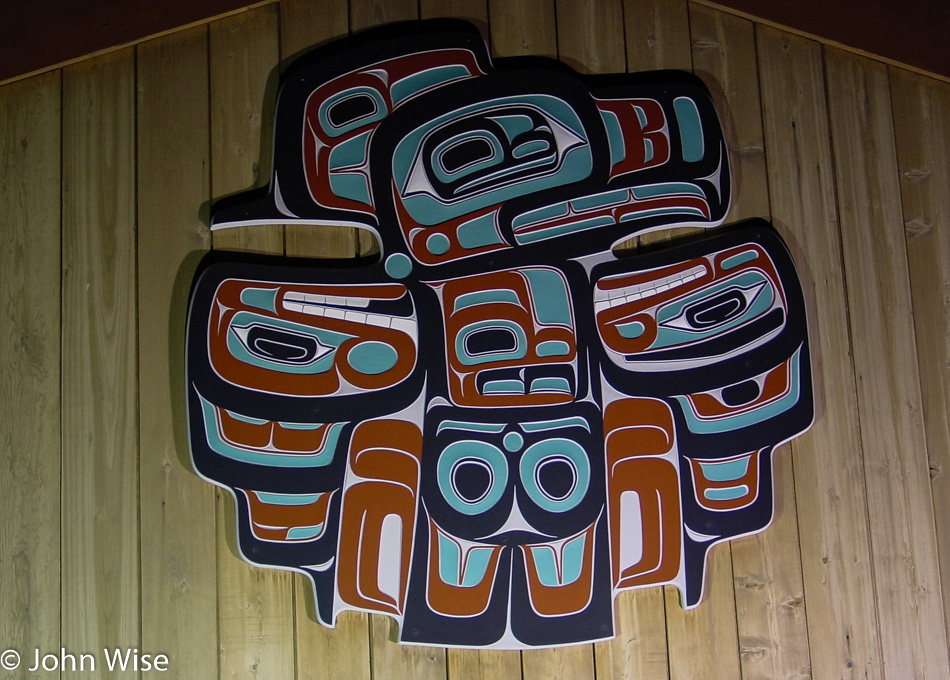
Passed this beautiful work of art on the S’Klallam Tribal Center in Jamestown on our way to our motel in Sequim, Washington, on the Olympic Peninsula.
